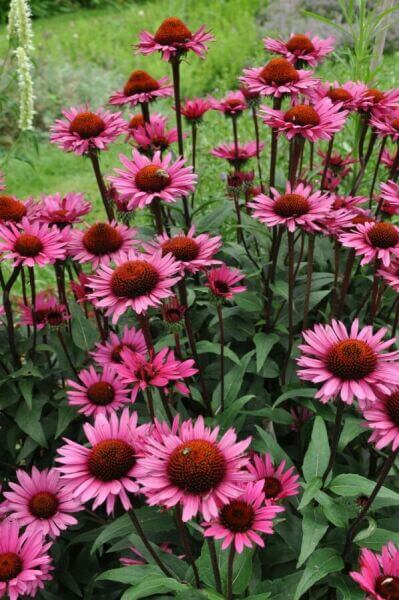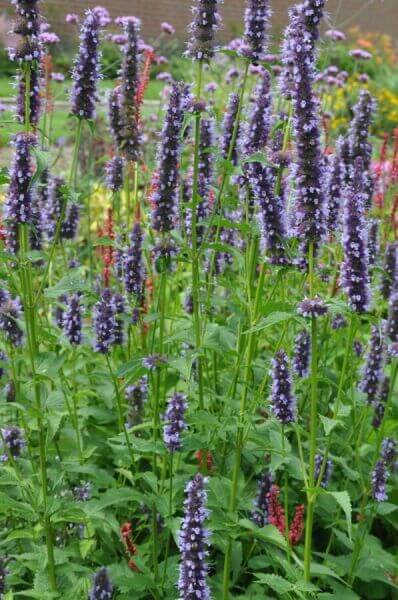Hardy Hedge Plants For Cold Climates
Hardy Hedge Plants For Cold Climates
Blog Article
Best Hedging Plants For Japanese Gardens
Improve your garden's attraction with lavish hedge varieties such as Yew (Taxus), Thuja, Laurel, Photinia, and Bamboo, commemorated for their structural stability and ecological benefits.
Yew and Thuja provide evergreen coverage and winter season durability, while Laurel provides fast growth and broad, fragrant leaves.
Photinia includes seasonal beauty with its dynamic red foliage, and Bamboo lends a low-maintenance, peaceful ambiance.
These hedges improve air quality, lower noise, and develop tranquil, personal spaces.
Correct planting, spacing, and maintenance guarantee energetic development and environmental consistency.
Check out how these lush varieties can raise your garden's appeal and well-being.
Key Takeaways
Change Your Garden With Lush Hedge Varieties
- Select Yew for its dense, evergreen growth and unequaled longevity.
- Select Laurel for its quick development and broad leaves, ensuring quick personal privacy.
- Pick Photinia for its lively seasonal foliage, which turns a striking dark red.
- Utilize Bamboo for a low-maintenance, winter-hardy hedge with visual appeal.
- Area plants 2-3 per meter and prune regularly for ideal development and health.
Popular Hedge Plants
When changing a garden with lavish hedge varieties, it's necessary to think about popular hedge plants such as Yew, Thuja, Laurel, and Photinia due to their unique characteristics and benefits.
Yew (Taxus) is highly esteemed for its longevity and dense, green growth, making it a prime choice for enduring landscapes.
Thuja is kept in mind for its evergreen foliage and robust winter season strength.
Photinia includes seasonal vibrancy with red leaves that darken with time, developing vibrant visual appeal.
Laurel provides fast growth and fragrant, broad leaves, perfect for fast personal privacy.
In Addition, Bamboo is an excellent option for atmosphere, providing a low-maintenance, winter-hardy option that enhances the garden's visual with its sophisticated, swaying walking sticks.
These selections cater to a range of horticultural requirements and preferences.
Benefits of Garden Hedges
Garden hedges use a wide variety of benefits, making them a valuable addition to any landscape. These natural barriers are cost-efficient to execute and provide substantial wind security, enhancing air flow and adding to sound reduction. The thick foliage of hedges like Thuja and Beech ensures personal privacy by obstructing presence, creating a tranquil and secluded environment.
Hedges likewise play an essential function in microclimate regulation, supplying a stable environment that promotes plant growth and lessens temperature level changes. Their detailed leaf structures filter contaminants, improving air quality and contributing to a healthier garden environment.
Moreover, hedges stand out in noise reduction, soaking up and deflecting sound waves to lower ambient noise levels. This dual performance of supplying both acoustic and visual personal privacy enhances the total serenity and aesthetic appeal of any garden.
Planting and Upkeep Tips
For an effective hedge, meticulous preparation of the planting location is vital. Ensure the soil has appropriate pH and drain to support strong root advancement.
Area the plants properly for the chosen species. Water the hedge frequently during its initial growth phase, adjusting as needed with seasonal modifications.
Execute a organized bug control and disease prevention technique, using chemical or organic treatments when needed. Routinely examine for aphids, mites, and fungal infections.
Apply mulch to retain moisture and reduce weeds. Seasonal pruning promotes thick development and air flow, important for plant health.
Following these guidelines will help you cultivate a vibrant, well-maintained hedge that boosts the appeal of your garden.
Spacing and Trimming Guidelines
Spacing and Cutting Standards
Correct spacing and trimming are essential for cultivating healthy, aesthetically appealing hedges. Sufficient spacing makes sure each plant gets adequate nutrients, light, and airflow.
Follow these standards for optimum hedge maintenance:
- Spacing: Position hedge plants 2-3 plants per meter to motivate robust growth.
- Pruning Strategies: Routine pruning is vital for maintaining wanted hedge height and shape. Trim brand-new development in summertime and cut down older wood during winter season.
- Seasonal Care: Adjust cutting techniques and schedules according to seasonal requirements to make sure plant health.
- Hedge Height: Regularly screen and trim to preserve the wanted hedge height and attain uniform looks.
Following these actions will ensure your hedge flourishes, improving both the appeal and performance of your garden.
Picking the Right Hedge
Picking the Right Hedge
Selecting the appropriate hedge involves examining elements such as mature height, foliage density, and ecological strength. Effective hedge plant selection requires understanding each species' growth qualities and site-specific versatility.
For example, Yew (Taxus) provides exceptional durability and thick development, while Thuja is significant for its winter season strength. In addition, thinking about upkeep requirements is vital; fast-growing species like Laurel or Privet need regular trimming, whereas low-maintenance choices like Bamboo or Ivy might be more suitable for those looking for minimal upkeep.
Environmental elements such as soil type, light schedule, and wetness conditions must also guide the choice procedure. This mindful method makes sure the selected hedges will grow, supplying both practical and aesthetic benefits to the garden landscape.
Shipment and Planting Suggestions
To guarantee your hedge plants grow, they need to be provided by specialized carriers and planted without delay upon arrival.
Follow these necessary actions for effective planting:
- Soil Preparation: Enhance the soil with natural matter to enhance drainage and nutrient material.
- Planting Depth: Produce a trench twice the width and equivalent to the depth of the root ball.
- Watering Methods: Water thoroughly after planting, keeping the soil regularly moist however not saturated.
- Mulching: Apply a layer of mulch to keep moisture and reduce weeds.
Client Assistance and Service
Provided the crucial function of timely help in horticultural pursuits, our customer assistance team is readily available six days a week through telephone, e-mail, and social media to provide expert recommendations and swiftly attend to any concerns. Their commitment to fast reaction times makes sure customer fulfillment by dealing with queries connected to plant health, optimal planting techniques, and upkeep schedules.

Accessibility
-------------------
6 days a week
This thorough support group, enhanced by a stellar 9.3/ 10 client rating, highlights our dedication to boosting the gardening experience for every single client.
Regularly Asked Questions
For How Long Does It Consider Hedge Plants to Develop?
Hedge Additional resources plants usually need one to 3 years to end up being completely established, with the precise period differing by types and growing conditions.
Effective care throughout this critical duration is essential for robust development. Constant watering, vigilant weed control, and suitable fertilizer application are essential in promoting strong root development.
For example, fast-growing types like Laurel might establish more rapidly, while slower-growing ranges such as Yew might take longer. Diligent upkeep speeds up the establishment process, resulting in thick and healthy hedges.
What Are the Best Hedge Plants for Privacy?
The question of the finest hedge plants for personal privacy involves evaluating evergreen and deciduous choices.
Evergreen hedges like Thuja, Laurel, and Cypress supply year-round protection, making sure constant personal privacy.
On the other hand, deciduous hedges such as Beech offer seasonal privacy, shedding leaves in colder months.
Secret upkeep pointers for personal privacy hedges consist of routine cutting, fertilizing in spring, and proper spacing-- usually 2 to 3 plants per meter.
In addition, constant watering and persistent weed elimination are essential for promoting healthy, dense growth.
Can Hedge Plants Attract Wildlife to My Garden?
Yes, hedge plants can bring in wildlife to your garden by providing essential benefits like shelter, food, and nesting websites, thereby enhancing local biodiversity. For instance, yew, holly, and laurel are exceptional for bring in birds, while ivy supports a range of insects.
Nevertheless, it is very important to keep in mind that there are some drawbacks, such as increased upkeep to handle pests and routine maintenance. Thoroughly picking and keeping hedge varieties can assist stabilize these disadvantages and benefits, eventually promoting a vibrant and sustainable community in your garden.
Exist Any Flowering Hedge Plants Available?
Yes, there are flowering hedge plants available that can improve the beauty of your garden.
For instance, Elaeagnus, likewise referred to as Olive Willow, produces fragrant white flowers in the fall, including a touch of elegance.
Photinia, another popular option, showcases vibrant red leaves that develop into a rich green, creating a vibrant visual result throughout the seasons.
To make sure these plants thrive, it's necessary to practice correct pruning strategies and seasonal maintenance, such as trimming new growth in the summertime and cutting down in the winter season.
These steps will assist maintain the health and aesthetic appeal of your flowering hedges.
How Do I Avoid Pests in My Hedge Plants?
To avoid bugs in hedge plants, employ natural bug control techniques and preserve proper hedge care. Introduce helpful bugs like ladybugs, which prey on hazardous insects, to create a balanced ecosystem.
Frequently check your hedges for signs of problem and immediately eliminate any affected parts to avoid the spread. Make sure the health of your hedges by applying balanced fertilizers and offering adequate water.
Use mulching to maintain soil moisture and appropriate spacing to minimize plant stress and promote robust development. These practices collectively assist in minimizing bug problems and preserving a healthy hedge.
Conclusion
In essence, choosing the right hedge varieties such as Yew, Thuja, and Laurel can change any garden into a relaxing sanctuary. These plants supply year-round plant, improve aesthetic appeal, and offer practical benefits like noise decrease and wind protection.
Appropriate planting techniques, precise spacing, constant watering, and seasonal trimming are crucial for optimum growth.
Reliable delivery services and professional client support ensure a seamless experience from purchase to planting, making it simpler than ever to elevate your outdoor space.
Garden hedges provide a plethora of advantages, making them a valuable addition to any landscape. These natural barriers are cost-effective to implement and provide significant wind protection, enhancing air circulation and contributing to noise decrease. The thick foliage of hedges like Thuja and Beech makes sure personal privacy by blocking presence, developing a secluded and serene environment.

Pruning Strategies: Routine pruning is important for maintaining desired hedge height and shape. Trim brand-new development in summer season and cut back older wood throughout winter.
Report this page